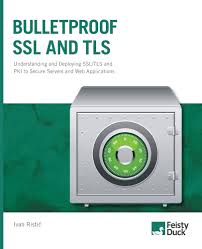Securing your website with an SSL certificate is essential for data protection, user trust, and SEO ranking. Whether you’re hosting Joomla, WordPress, or Magento on a VPS with LEMP (Linux, Nginx, MariaDB/MySQL, PHP), this guide explains how to install both free SSL certificates from Let’s Encrypt and paid SSL certificates from trusted vendors. We will also cover CMS-specific configuration to ensure your entire stack is secured.
Comprehensive Guide: Installing SSL Certificates for Joomla, WordPress, and Magento on a VPS with LEMP Stack
1. Introduction
Securing your Joomla, WordPress, or Magento website with an SSL certificate is a fundamental step toward building trust, enhancing SEO rankings, and ensuring data integrity. Hosting on a VPS with a LEMP (Linux, Nginx, MariaDB/MySQL, PHP) stack provides flexibility and performance, but requires a systematic approach to SSL deployment.
This guide provides a step-by-step approach for:
- Free SSL certificates via Let’s Encrypt.
- Paid SSL certificates from Commercial Certificate Authorities (CAs).
- Specific configurations for Joomla, WordPress, and Magento.
2. Understanding SSL and TLS
SSL (Secure Sockets Layer) and its successor TLS (Transport Layer Security) provide encryption between a client and server. SSL certificates authenticate your domain, encrypt communications, and display a secure padlock icon in browsers.
Key benefits:
- Encryption: Protects sensitive data like login credentials and payment details.
- Authentication: Verifies your website’s identity.
- SEO Ranking Boost: Google prioritizes HTTPS websites in search results.
- Trust: Builds user confidence for eCommerce transactions.
3. VPS LEMP Stack Overview
A VPS running a LEMP stack is an optimal choice for high-traffic CMS deployments:
- Linux: Ubuntu 24.04 LTS (long-term support, security updates).
- Nginx: High-performance web server.
- MariaDB/MySQL: Robust database engines for CMS platforms.
- PHP-FPM: Efficient PHP processor for dynamic content.
Basic LEMP Setup Commands
sudo apt update && sudo apt upgrade -y sudo apt install nginx mariadb-server php-fpm php-mysql unzip -y
4. SSL Options: Free vs Paid
|
Feature |
Let’s Encrypt (Free) |
Paid SSL (Commercial CA) |
|---|---|---|
|
Cost |
Free |
$10–$500/year |
|
Validation |
Domain Validation (DV) only |
DV, OV, EV (Enterprise-level trust) |
|
Warranty |
None |
Yes |
|
Wildcard Certificates |
Yes (DNS challenge) |
Yes |
|
Automation |
Easy with Certbot |
Manual or semi-automated |
|
Best For |
Blogs, SMEs, Nonprofits |
eCommerce, Enterprises, Finance |
5. Installing SSL Certificates
5.1 Free SSL with Let’s Encrypt
sudo apt install snapd sudo snap install core; sudo snap refresh core sudo snap install --classic certbot sudo ln -s /snap/bin/certbot /usr/bin/certbot sudo certbot --nginx
- Certbot automatically configures SSL in Nginx.
- Renewal is automatic.
Test renewal:
sudo certbot renew --dry-run
5.2 Paid SSL Certificate Installation
- Purchase an SSL Certificate from DigiCert, Sectigo, or GlobalSign.
- Generate a CSR:sudo openssl req -new -newkey rsa:2048 -nodes -keyout your_domain.key -out your_domain.csr
- Submit the CSR and validate your domain.
- Download the SSL certificate files:
- your_domain.crt (server certificate)
- ca_bundle.crt (CA chain)
- Move Certificates to Nginx Directory:sudo mkdir /etc/nginx/ssl sudo cp your_domain.crt /etc/nginx/ssl/ sudo cp your_domain.key /etc/nginx/ssl/ sudo cp ca_bundle.crt /etc/nginx/ssl/
6. Nginx SSL Configuration
server { listen 80; server_name your_domain; return 301 https://$host$request_uri; } server { listen 443 ssl; server_name your_domain; root /var/www/html/website; index index.php index.html index.htm; ssl_certificate /etc/nginx/ssl/your_domain.crt; ssl_certificate_key /etc/nginx/ssl/your_domain.key; ssl_trusted_certificate /etc/nginx/ssl/ca_bundle.crt; location / { try_files $uri $uri/ /index.php?$args; } location ~ \.php$ { include fastcgi_params; fastcgi_pass unix:/var/run/php/php8.3-fpm.sock; fastcgi_param SCRIPT_FILENAME $document_root$fastcgi_script_name; } }
Reload Nginx:
sudo nginx -t sudo systemctl reload nginx
7. CMS-Specific SSL Configuration
7.1 Joomla
- Admin → System → Global Configuration → Server → Set Force HTTPS: Entire Site.
- Update $live_site in configuration.php (optional):public $live_site = 'https://your_domain';>
7.2 WordPress
- Update URLs in Settings → General.
- Add this to wp-config.php:define('FORCE_SSL_ADMIN', true);
- Optional plugin: Really Simple SSL.
- Update links:wp search-replace 'http://your_domain' 'https://your_domain'
7.3 Magento
- Update base URLs:php bin/magento config:set web/unsecure/base_url https://your_domain/ php bin/magento config:set web/secure/base_url https://your_domain/>
- Flush cache and redeploy:php bin/magento cache:flush php bin/magento setup:upgrade php bin/magento setup:static-content:deploy -f
8. Security Best Practices
- Enable HSTS:add_header Strict-Transport-Security "max-age=31536000" always;
- Disable outdated TLS protocols.
- Regularly patch servers and CMS.
- Implement WAF (Web Application Firewall).
- Use strong passwords and 2FA for admin access.
9. Testing SSL
- SSL Labs SSL Test
- Browser Developer Tools → Security
- curl -I https://your_domain>
10. How KeenComputer.com Can Help
At KeenComputer.com, we provide:
- VPS setup and hardening for Joomla, WordPress, and Magento.
- SSL certificate procurement, installation, and automation.
- eCommerce-grade security compliance (PCI-DSS).
- Server optimization for scalability and SEO.
- Ongoing maintenance and security audits.
11. References
- Let’s Encrypt Documentation: https://letsencrypt.org/docs/
- Nginx SSL Configuration: https://nginx.org/en/docs/http/configuring_https_servers.html
- Certbot User Guide: https://certbot.eff.org/
- Joomla HTTPS Setup: https://docs.joomla.org/Enabling_HTTPS
- WordPress HTTPS Setup: https://wordpress.org/support/article/https-for-wordpress/
- Magento 2 HTTPS Guide: https://developer.adobe.com/commerce/
- DigiCert Paid SSL Setup: https://www.digicert.com/kb/ssl-support/ssl-installation-nginx.htm
- PCI-DSS Security Guidelines: https://www.pcisecuritystandards.org/
- OWASP HTTPS Best Practices: https://owasp.org/
- Ubuntu Server Docs: https://ubuntu.com/server/docs
